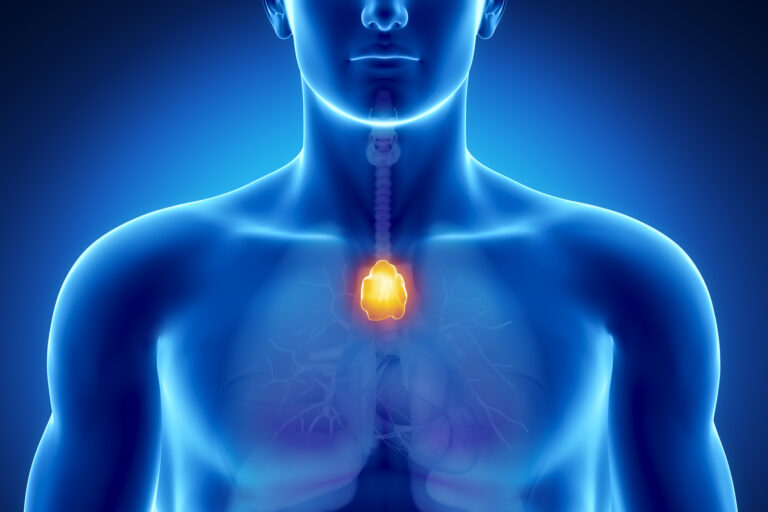
Miastenia gravis La miastenia gravis (MG) es un trastorno neuromuscular autoinmune que causa debilidad muscular y fatiga rápida en los músculos voluntarios (músculos que podemos mover y controlar, como los músculos oculares). La miastenia gravis tiene una aparición repentina y sus síntomas pueden cambiar y progresar con el tiempo, afectando diferentes partes del cuerpo.
Hable con un especialista sobre la asistencia con los copagos
Según los síntomas y el tipo de músculos afectados, la miastenia gravis se clasifica en cinco etapas, de leve a grave. Dado que cada etapa responde de forma diferente al tratamiento, se requiere un diagnóstico exhaustivo para obtener resultados eficaces en el tratamiento del paciente.
Este artículo analiza las cinco etapas (clases) de la miastenia gravis que pueden ayudarle a identificar la afección y buscar atención médica a tiempo.
Las cinco etapas de la miastenia gravis
Los proveedores de atención médica clasifican las etapas de la miastenia gravis según los síntomas y el grado de debilidad que experimenta una persona.
Etapa temprana: Clase I
En la etapa inicial, la MG afecta los músculos oculares, en particular los que controlan el movimiento de los ojos. Por lo tanto, los párpados se debilitan ligeramente. Esta etapa inicial se denomina miastenia gravis ocular ya que la debilidad muscular se limita únicamente a los ojos.
Durante esta etapa, un individuo puede experimentar los siguientes síntomas:
- Ptosis (caída de los párpados)
- Diplopía (visión doble)
- Dificultad para enfocar
Alrededor 85% De los pacientes, la ptosis o la diplopía son el primer síntoma de miastenia gravis. Estos síntomas pueden fluctuar, acentuándose con la fatiga y mejorando con el reposo.
Debido a que la MG es difícil de diagnosticar en sus primeras etapas, un médico puede diagnosticar erróneamente su dolencia, creyendo que los síntomas están relacionados con problemas oculares.
Miastenia grave en estadio leve: clase II
La MG puede afectar otros grupos musculares además de los ojos durante los dos primeros años de su aparición. Por ejemplo, los músculos que controlan las expresiones faciales pueden debilitarse y, como resultado, las personas experimentan dificultad para sonreír. Sin embargo, la gravedad del síntoma permanece relativamente leve durante esta etapa.
Miastenia Gravis Generalizada: Clase III – V

La miastenia gravis ocular suele progresar a miastenia gravis generalizada en el plazo de un año desde su aparición si no se diagnostica y trata a tiempo. En la miastenia gravis generalizada, la debilidad muscular se extiende a otras partes del cuerpo, como la cabeza y el cuello.
Los músculos que rodean la cabeza y el cuello se llaman músculos bulbares. Participan en el habla, la deglución, la masticación y en mantener la mandíbula en su lugar.
Alrededor 15% de pacientes Experimente debilidad muscular bulbar como síntoma inicial. Los síntomas incluyen:
- Dificultad para masticar o atragantamiento frecuente
- Disfagia (dificultad para tragar)
- Ronquera (cambios en el tono y la calidad de la voz)
- Disartria (dificultad para hablar)
- Síndrome de la cabeza caída
La gravedad de los síntomas se mantiene relativamente moderada durante esta etapa. Además, Las clases III a V en la miastenia gravis generalizada se clasifican además según la gravedad y la extensión de la afectación muscular.
4. Miastenia Gravis Estadio: Clase IV
En el estadio IV, la debilidad muscular en las extremidades superiores se acentúa más que en las inferiores. Los pacientes tienen dificultad para realizar tareas cotidianas como agarrar o levantar objetos, subir escaleras, caminar y sentarse.
En la mayoría de las personas, la debilidad muscular puede alcanzar su máxima gravedad entre uno y tres años después de su aparición. Sin embargo, con el tratamiento adecuado, las personas pueden mantenerse físicamente activas.
Obtenga asistencia financiera
5. Crisis miasténica: Clase V
La clase V es la etapa grave de la miastenia gravis, también conocida como crisis miasténicaEn esta etapa, la debilidad muscular del sistema respiratorio provoca dificultad para respirar. Los músculos que controlan la respiración se debilitan gravemente y no pueden funcionar correctamente.
Esta es una etapa grave, potencialmente mortal y requiere atención médica inmediata, como intubación o ventilación mecánica para mantener las vías respiratorias.
Conclusión
La miastenia gravis (MG) es un trastorno neuromuscular crónico, pero poco frecuente, que causa debilidad muscular en diferentes partes del cuerpo, desde los ojos (miastenia gravis ocular) hasta insuficiencia respiratoria (fase grave). Comprender las etapas de la miastenia gravis y los músculos afectados puede ayudarle a recibir un tratamiento oportuno.
REFERENCIAS:
- Suresh, AB, y Asuncion, RMD (2023b). Miastenia gravis. StatPearls - Estantería NCBI. https://www.ncbi.nlm.nih.gov/books/NBK559331/
- Panorama clínico de la miastenia grave | MGFA. https://myasthenia.org/Profesionales/Resumen clínico de la miastenia gravis
- Hehir, MK, y Silvestri, NJ (2018). Miastenia gravis generalizada. Clínicas neurológicas, 36(2), 253–260. https://doi.org/10.1016/j.ncl.2018.01.002
- Profesional, CCM Miastenia gravis (MG)Clínica Cleveland. https://my.clevelandclinic.org/health/diseases/17252-myasthenia-gravis-mg
- Gilhus, NE y Verschuuren, JJ (2015). Miastenia gravis: clasificación de subgrupos y estrategias terapéuticas. Neurología de The Lancet, 14(10), 1023–1036. https://doi.org/10.1016/s1474-4422(15)00145-3












